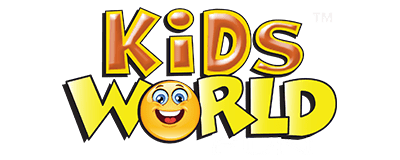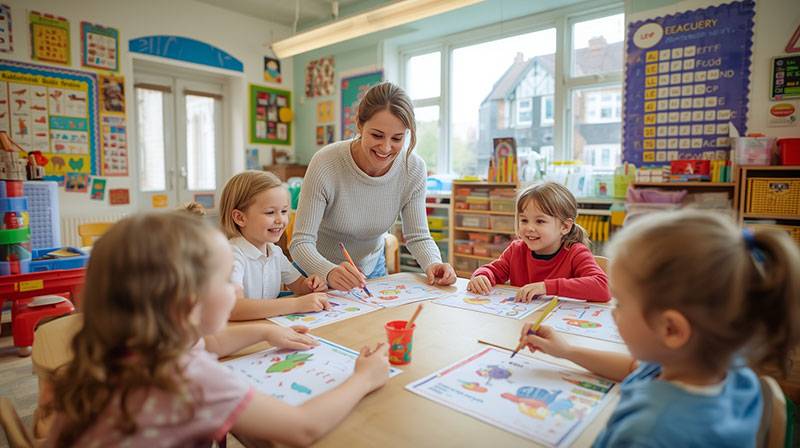Building First Words: Fun English Worksheets for Preschool Learners
1. Introduction to Early English Learning
Preschool years are a fun time of learning because this is when kids start to learn the letters, sounds, and words that are the building blocks of communication. Worksheets that are fun and interactive and teach kids English at a young age can make learning fun and useful at the same time.
These preschool English worksheets do more than just help kids remember words. They use play, color, and creativity to help kids understand what the words mean. Making learning fun can help a child gain confidence and love language from a young age.
? “Play is the highest form of research.” – Albert Einstein
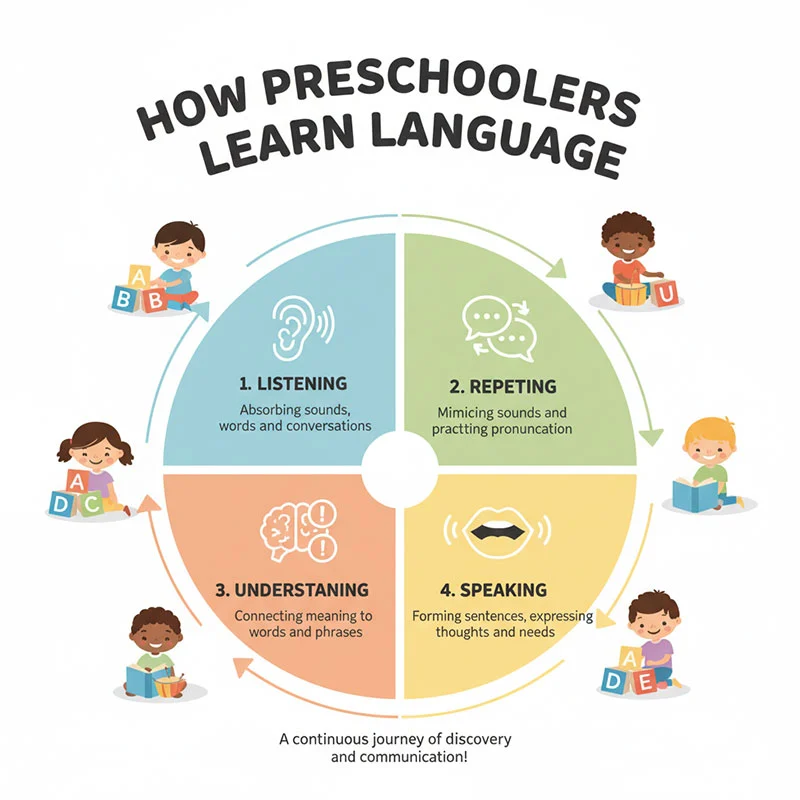
2. Why Vocabulary Development Starts Early
Researchers have found that kids who learn a lot of new words early on do better at reading and understanding later on. From 2 to 5 years old, a child’s brain is like a sponge that is ready to soak up new words, sounds, and meanings.
| Age Range | Language Milestones | Learning Focus |
| 2–3 years | Recognizes simple words (cat, ball) | Naming and pointing |
| 3–4 years | Forms small sentences | Vocabulary expansion |
| 4–5 years | Understands opposites, colors, numbers | Grammar and structure |
Why it’s important:
- It is easier to talk to other people when you learn new words.
- Kids who learn early have better memory and pronunciation.
- It makes people more curious and creative, which are two things that help people learn to read and write.
? Knowing a lot of words early on means you can talk to people with confidence!
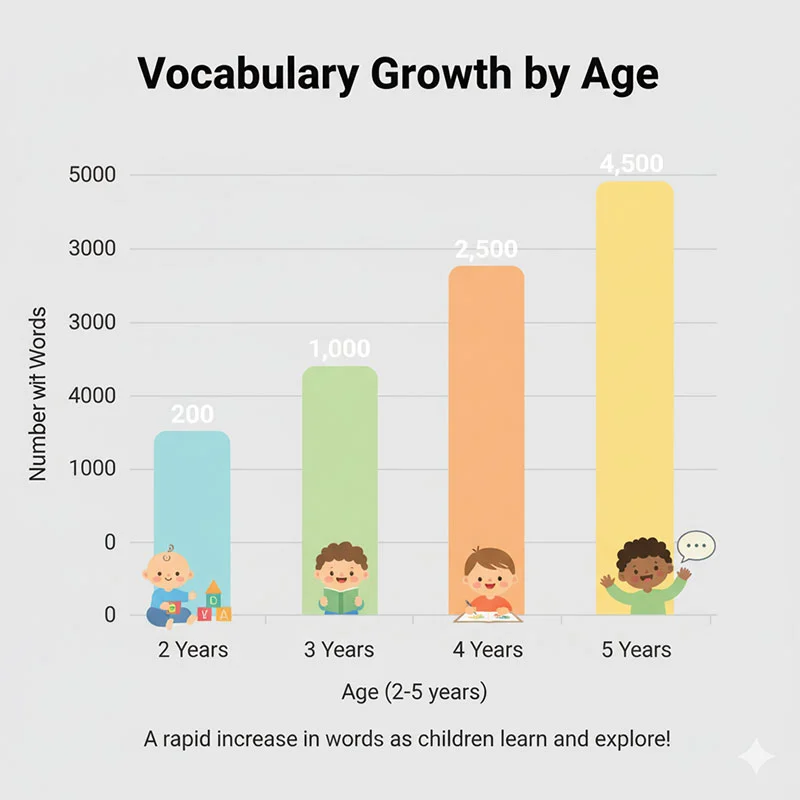
3. Common Preschool Words and Picture Associations
Connecting words with pictures is the first step to learning English. Kids learn faster when they can see a word and an image at the same time.
For example, preschoolers will find it easier to understand and remember the word “apple” if you show them a picture of an apple with the word “apple” underneath it.
Some common groups of words that preschool English worksheets use are:
| Category | Examples |
| Animals | Cat, Dog, Lion, Bird |
| Food | Apple, Banana, Milk, Cake |
| Colors | Red, Blue, Green, Yellow |
| Family | Mom, Dad, Baby, Grandpa |
| Nature | Sun, Moon, Tree, Flower |
| Everyday Objects | Chair, Book, Car, Ball |
Tip: Always use pictures that are clear and bright, and make the text big and easy to read. It’s easier to recognize when you start with capital letters.
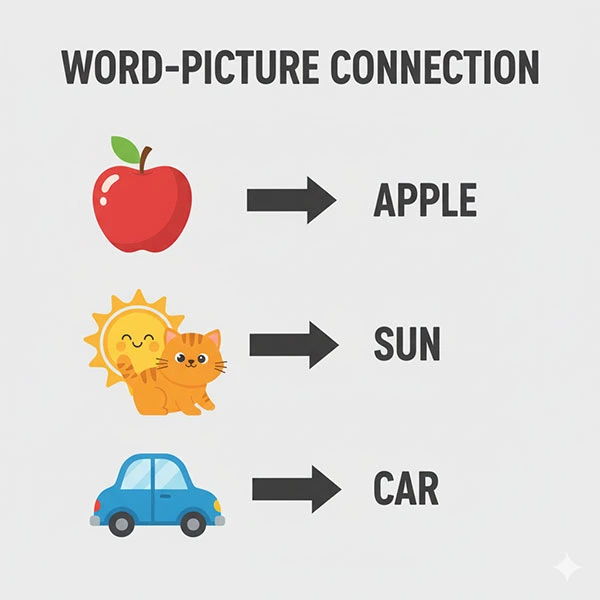
4. Types of Fun Worksheets for Preschool English Learners
Not everyone learns in the same way. When you change up the kinds of worksheets, kids stay interested and motivated. Let’s check out the best games in English for kids:
a. Matching worksheets
Kids put pictures with the right letters or words.
For instance, match the picture of a dog with the word “dog.”
? Skills learned: remembering words, recognizing things, and paying attention.
b. Worksheets for tracing
These worksheets have dotted lines that kids can use to trace letters or words.
Write the word “Apple” or the letter “A.”
Skills learned: how to write letters, how to control your fine motor skills, and how to get ready to write.
c. Coloring Sheets
Children color pictures based on what they are told.
“Color the apple red” or “Color the cat brown” are two examples.
? Skills learned: being able to tell colors apart, understanding what you hear, and being creative.
d. Worksheets for counting and putting names on things
Teach words and numbers at the same time.
“Count and circle three apples,” for instance.
? Skills learned: putting together early math and vocabulary.
e. Worksheets for cutting and pasting
Kids cut out pictures and glue them next to the right words. Things you learned: how to solve problems, how to organize things, and how to coordinate your hands and eyes.
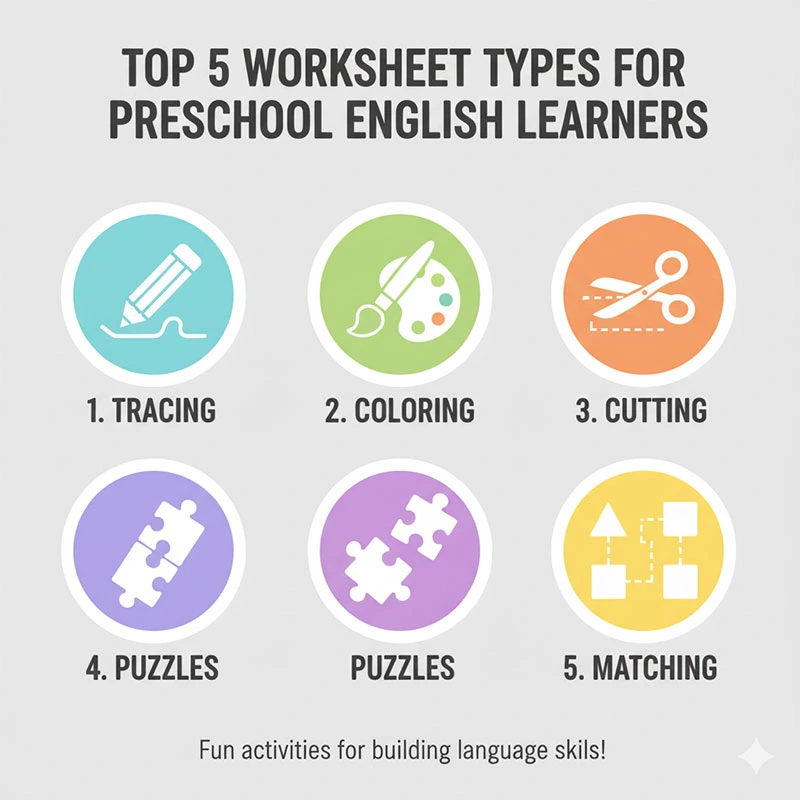
5. Interactive Ways to Teach Letters and Sounds
Preschoolers who want to learn more words need to learn phonics. Instead of just memorizing things, do English activities that let you listen, move, and be creative.
Here are some helpful tips:
a. Look for Sounds in the Alphabet
Say a letter sound, like “B,” and have the child look for something that starts with that sound, like a banana or a ball.
b. Songs and rhymes that have letters in them
When you sing songs like “ABC Song” or make up rhymes about certain letters, it’s fun to repeat them.
c. Feel the letters as you play with them
Use sand, playdough, or finger paints to make letters. This fun activity helps kids remember shapes and sounds.
d. Flashcard games
Use flashcards to play “Find the Sound” or “What’s Missing?” to help you remember what you’ve learned.
e. Things that help you learn online
Kids can use interactive online worksheets and apps to work on their pronunciation and listening skills.
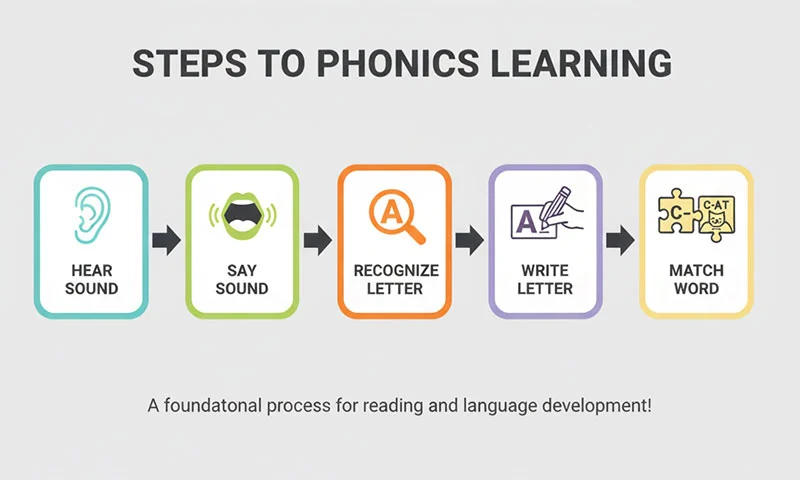
6. What Parents Can Do to Help Their Kids Learn English at Home
Parents are very important for helping kids learn to speak. You don’t have to be an expert in English; all you have to do is be consistent and supportive.
? Helpful Tips:
- Fill the area with print: Put labels on things in your home, like the chair, door, and cup.
- Every day, read. Just 10 minutes of story time helps kids learn new words.
- Talk a lot: Use short, clear sentences. Ask questions that don’t have a clear answer.
- Don’t just praise correct answers; also praise attempts to read or write.
- Let kids see, hear, and touch what they’re learning to get them interested.
- Talk like you do every day: Make learning a part of your daily life. For instance, “Let’s brush your teeth” is an action word that reinforces the idea of doing something.
? Learning begins at home, word by word.
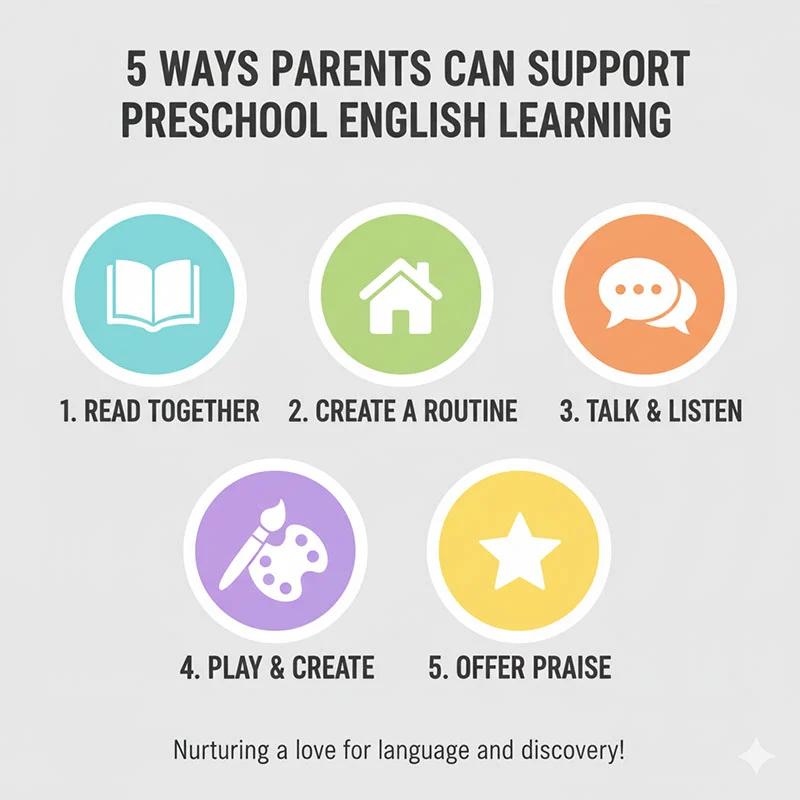
7. Sample Worksheet Ideas
You can print or make these three English worksheets for preschoolers at home.
Worksheet 1: Have fun matching words with animals
Objective: Match each animal with its name.
| ? | Cat |
| ? | Dog |
| ? | Cow |
| ? | Bird |
| ? | Rabbit |
Instructions: Draw a line from the name of the animal to the animal.
Worksheet 2: Trace and Color
Objective: Learn the word “APPLE.”
Trace → A P P L E
Then color the apple red! ?
? Skills: Letter tracing, coloring, recognition.
Worksheet 3: What’s This? (Picture Labeling)
Objective: Identify and label objects.
Pictures: sun ☀️, ball ⚽, car ?, book ?
Write the correct word below each image.
Extra Challenge:
Ask your child to use the words in short sentences.
Example: “The sun is hot.” “I have a red ball.”
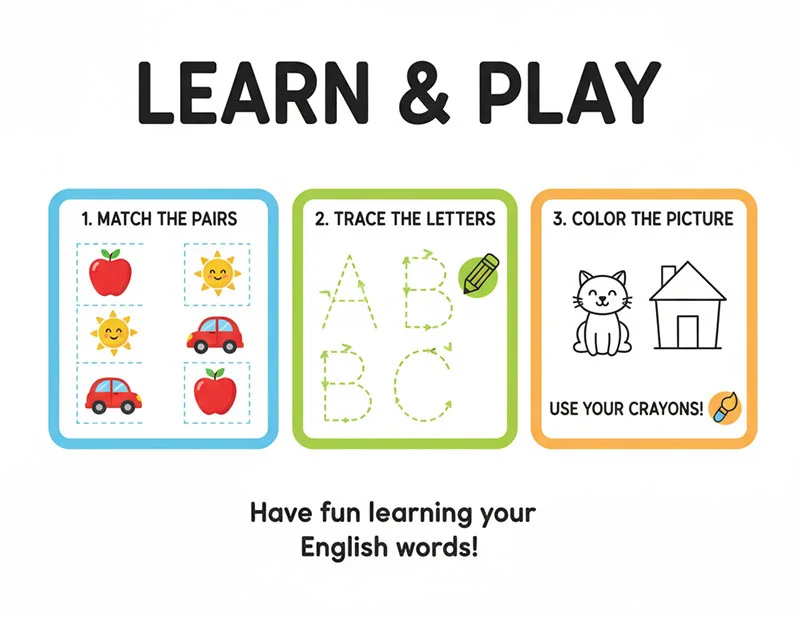
8. FAQs for Preschool English Learning
Q1: When should my child start learning English?
A: You can start teaching your child English words when they are 2 years old by using songs, stories, and picture books. Worksheets are best for kids who are 3 to 5 years old.
Q2: How many words should a preschooler know?
A: By the time they are 5, most kids can say between 1,000 and 2,000 words. Don’t worry about the exact number; just keep learning and getting better.
Q3: Are digital worksheets good for kids who are not yet in school?
A: Yes, but only a little bit. Printable worksheets, games you can play with other people, and digital flashcards all make learning fun.
Q4: What if English isn’t the first language we speak at home?
A: That’s fine! Use worksheets that have words in both English and your first language. Have fun with it and encourage people to do it again.
Q5: How can I tell if I’m getting better?
A: Look for things like better pronunciation, asking questions about new words, and being able to name things they already know.
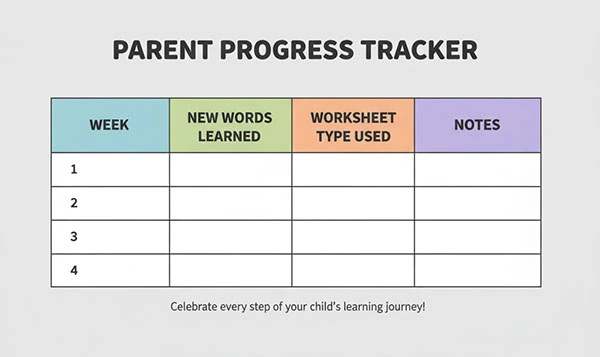
9. Conclusion and Free Printables
Your child should have fun, find it easy, and do it often when they learn their first English words. Preschool English worksheets are great because they let kids be creative while still following rules. They make learning fun and like an adventure.
Parents and teachers can help kids learn English through play, which will help them build a strong vocabulary, fine motor skills, and communication skills that will last a lifetime.
Every day, teach your preschooler new words, like how to name fruits at snack time or sing along to alphabet songs. Remember that every word you learn today will make you feel better about yourself in the future.
? Free Printable Resources
Here are some free worksheet ideas and resources that you can put on your website or link to:
| Resource Type | Example Activity | Skill Focus |
| Alphabet Tracing Sheets | Trace A–Z letters | Writing readiness |
| Word Matching Cards | Match words to pictures | Vocabulary recall |
| Color and Count Pages | Color 3 apples, 2 bananas | Number + vocabulary |
| Rhyming Words Worksheets | Cat–Hat, Sun–Run | Phonetic awareness |
| Sight Word Bingo | Play and match common words | Reading practice |
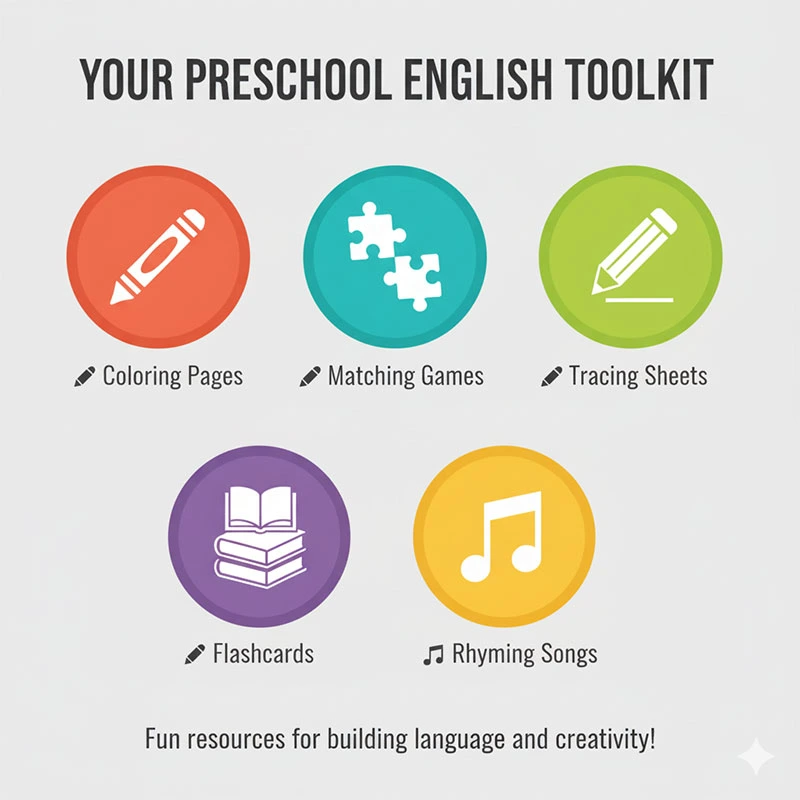
Final Thought:
Every word your child learns makes them more creative, self-assured, and interested in the world around them.
